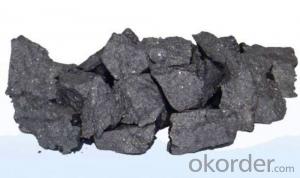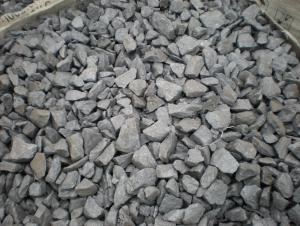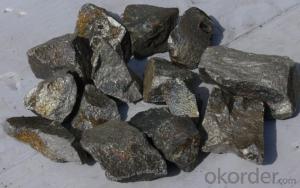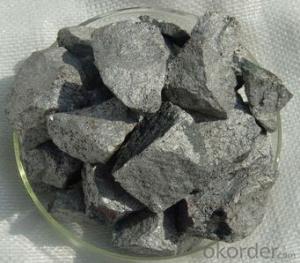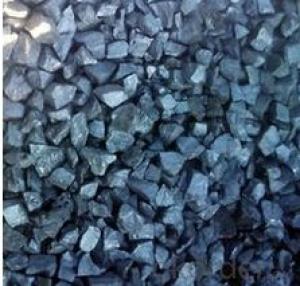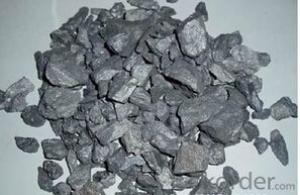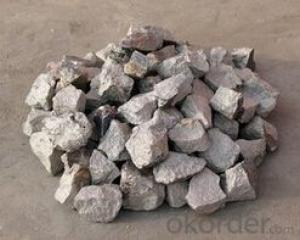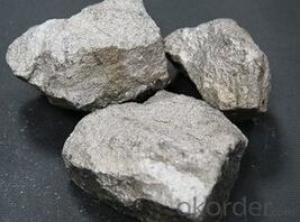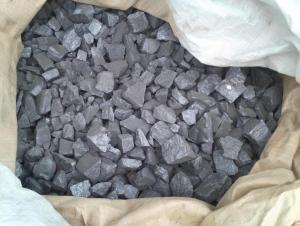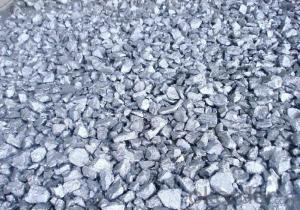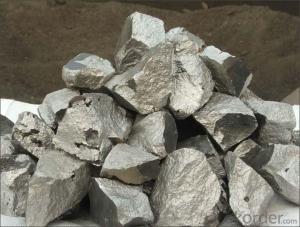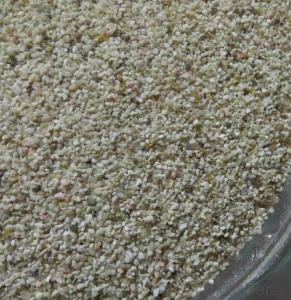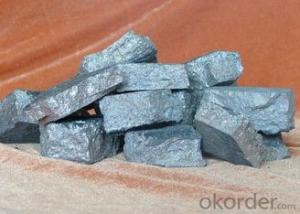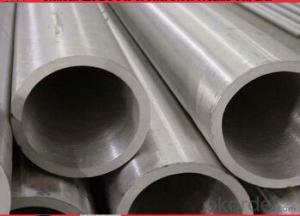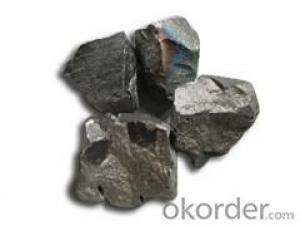Binary alloys of silicon and calcium
- Loading Port:
- China main port
- Payment Terms:
- TT OR LC
- Min Order Qty:
- 1000 m.t.
- Supply Capability:
- 10000 m.t./month
OKorder Service Pledge
OKorder Financial Service
You Might Also Like
Calcium and silicon and oxygen has a strong affinity.Especially calcium, not only with strong affinity, oxygen and sulfur, nitrogen has a strong affinity.So the calcium silicon alloy is a kind of ideal compound deoxidizer, desulfurization agent.Silicon alloy not only deoxidization ability strong, deoxidizing products tend to rise, easy to discharge, but also can improve the performance of the steel, plasticity, impact toughness of steel and liquidity.Currently the calcium silicon alloy can be final deoxidization instead of aluminium.Be applied to the high quality steel.
Binary alloys of silicon and calcium, belongs to the category of ferroalloys.Its main ingredients for silicon and calcium, but also contain different amounts of iron, aluminum, carbon, sulfur and phosphorus and other impurities.Iron and steel industry as a calcium additive, deoxidizer, desulfurization agent and nonmetal inclusions denaturant.Used as a nucleating agent and denaturant cast iron industry.The calcium silicon alloy by calcium and silicon content of different is divided into:
Ca(>) | Si | |
Ca31Si60 | 31 | 50~65 |
Ca28Si60 | 28 | 50~65 |
Ca24Si60 | 24 | 55~65 |
Ca20Si55 | 20 | 50~60 |
Ca16Si55 | 16 | 50~60 |
- Q:Which prawns know of what is called red hard alloy.
- A large amount of microscopic motion of microscopic particles (molecules, atoms, etc), i.e., irregular motion of a large number of microscopic particles that make up macroscopic objects or systems.
- Q:Use of waste cemented carbide
- Two, crushing methodFor hard alloy containing drilling is not high, because the hardness is relatively low, can use manual or mechanical means broken to a certain fineness in wet grinding mill for a period of time, to reach a certain size for reproduction of hard alloy. This force is a method has the advantages of simple process, short process, low energy consumption, no pollution to the environment, but often in the manual crushing hard alloy, metallic materials due to debris into the tools have broken material pollution, in addition, due to the hard alloy drill containing high amount of easily broken, mechanical crushing method is very limited; cemented carbide complex material by this method is also very difficult to ensure the quality of recycled products. Process method: artificial crushing is broken, crushed into powder 200 mesh or using bulk of hard alloy ball mill for crushing strikes the ball, then add in the bjm alcohol in wet grinding, and then enter the remanufacturing process of hard alloy.Some companies use cooling method: first crushing waste hard alloy in a muffle furnace heated to 80 above this immediately into the water quench, resulting in hard alloy cracking, and then enter the mechanical crushing process. This force is a method in the last century in 90s in Hebei Province Qinghe to gain popularity, there were dozens of county size ranging from recycling plant using the recycled and processed hard alloy, hard alloy processed over a thousand tons of annual production, the total output value of 300 million yuan, becoming one of the local pillar industry. At present, there is still a certain space for development of the crushing method, and the crushing method still needs to be improved by adopting more advanced and clean crushing equipment or by means of the force method which does not destroy the microstructure of cemented carbide with high efficiency.
- Q:The milling of hard cutting workpiece hard alloy cutter knife edge collapse and Countermeasures of reason
- Difficult to cut material hardness and strength are very high. The tool produces a great resistance to cutting, and the tool is difficult to resist such a large cutting force, so the tool will be damaged.There are solutions:Heat the treated material to reduce the hardness.Replace cutting tools with better machinability.Change the tool angle to resist greater cutting force.Reduce cutting parameters.Change the processing process, such as using EDM
- Q:We'll drill on the stainless steel column. Which bit is better?
- High cutting force and high cutting temperatureThis kind of material has high strength, large tangential stress and large plastic deformation during cutting, so it has great cutting force. In addition, the material has a poor thermal conductivity, which results in the increase of cutting temperature, and the high temperature often concentrates in the long and narrow area near the cutting edge of the tool, thus speeding up the tool wear.Serious work hardeningAustenitic stainless steel and some high alloy stainless steel is austenite, high work hardening tendency when cutting, usually plain carbon steel several times, the tool in hardening region cutting, shortening tool life.Easy to stick the knifeBoth austenitic stainless steel and martensitic stainless steel exist in the process of chip toughness, cutting temperature is very high. When the tough chip flows through the rake face, the bonding, welding and other sticking phenomena will occur, which will affect the surface roughness of the machined parts. ??Tool wear acceleratedThe materials generally contain high melting point elements, large plasticity, high cutting temperature, so that the tool wear faster, sharpening and changing knives frequently, thus affecting the production efficiency and improving the tool cost.Mainly to reduce the cutting line speed, feed. With special processing stainless steel or high temperature alloy cutting tools, drilling, tapping the best internal cooling
- Q:Is nickel base alloy hard alloy?
- There are three kinds of cemented carbides used in machining,:1, YG--- tungsten cobalt alloy products, the YG6 is generally suitable for machining cast iron, roughing non-ferrous metals and their alloys and non metallic material during continuous cutting, interrupted cutting of semi fine fine cars and trucks etc..
- Q:How hard metal is welded with stainless steel?
- Oxyacetylene brazing, using copper wire dipped in copper flux, brazing carbide and stainless steel.
- Q:What kind of grinding wheel is the most suitable for carbide tools?. My existing grinder, 2800 rpm, /s wheel diameter, can hold 250mm. Please help answer.
- Green silicon carbide particle size 60-80, coarse grinding fine grinding. Sharpening bar with white corundum
- Q:Customers ask whether cemented carbide can be used in the food industry! ~
- Used for processing food should not be possible, the composition of tungsten carbide.
- Q:What kind of clamp blade should be used for hard alloy?
- Processing hard alloy process and machining workpiece is completely different, what kind of machine clip blade can be realized, this is a special cutting method, if that is cutting, rather than grinding or grinding.
- Q:What are hard alloys? Which ones are they? How often are they chosen?
- Cemented carbide is a hard particle of refractory metals (tungsten, tantalum, titanium, molybdenum, etc.) that is mixed with one or more iron elements (cobalt, nickel, or iron), pressed and molded, and then sintered. Types and properties of cemented carbides: (1) classification and grade of cemented carbides. Tungsten carbide cobalt carbide is mainly composed of tungsten carbide (WC) and binder cobalt (Co). The brand is from "YG" ("hard cobalt" Pinyin prefix) composition and percentage of average amount of cobalt. For example, YG8 is a tungsten cobalt carbide that represents an average WCo = 8% and the remainder is tungsten carbide. Tungsten carbide cobalt carbide is mainly composed of tungsten carbide, titanium carbide (TiC) and cobalt. The grade by "YT" ("hard ti" Pinyin prefix) and the average content of titanium carbide. For example, YT15 represents an average WTi = 15%, while the others are tungsten titanium cobalt carbide with tungsten carbide and cobalt content. The tungsten titanium tantalum (NB) hard alloy is the main component of tungsten carbide, titanium carbide, tantalum carbide (or niobium carbide) and cobalt. This kind of hard alloy is also called universal cemented carbide or universal hard alloy.
1. Manufacturer Overview |
|
|---|---|
| Location | |
| Year Established | |
| Annual Output Value | |
| Main Markets | |
| Company Certifications | |
2. Manufacturer Certificates |
|
|---|---|
| a) Certification Name | |
| Range | |
| Reference | |
| Validity Period | |
3. Manufacturer Capability |
|
|---|---|
| a)Trade Capacity | |
| Nearest Port | |
| Export Percentage | |
| No.of Employees in Trade Department | |
| Language Spoken: | |
| b)Factory Information | |
| Factory Size: | |
| No. of Production Lines | |
| Contract Manufacturing | |
| Product Price Range | |
Send your message to us
Binary alloys of silicon and calcium
- Loading Port:
- China main port
- Payment Terms:
- TT OR LC
- Min Order Qty:
- 1000 m.t.
- Supply Capability:
- 10000 m.t./month
OKorder Service Pledge
OKorder Financial Service
Similar products
New products
Hot products
Related keywords
